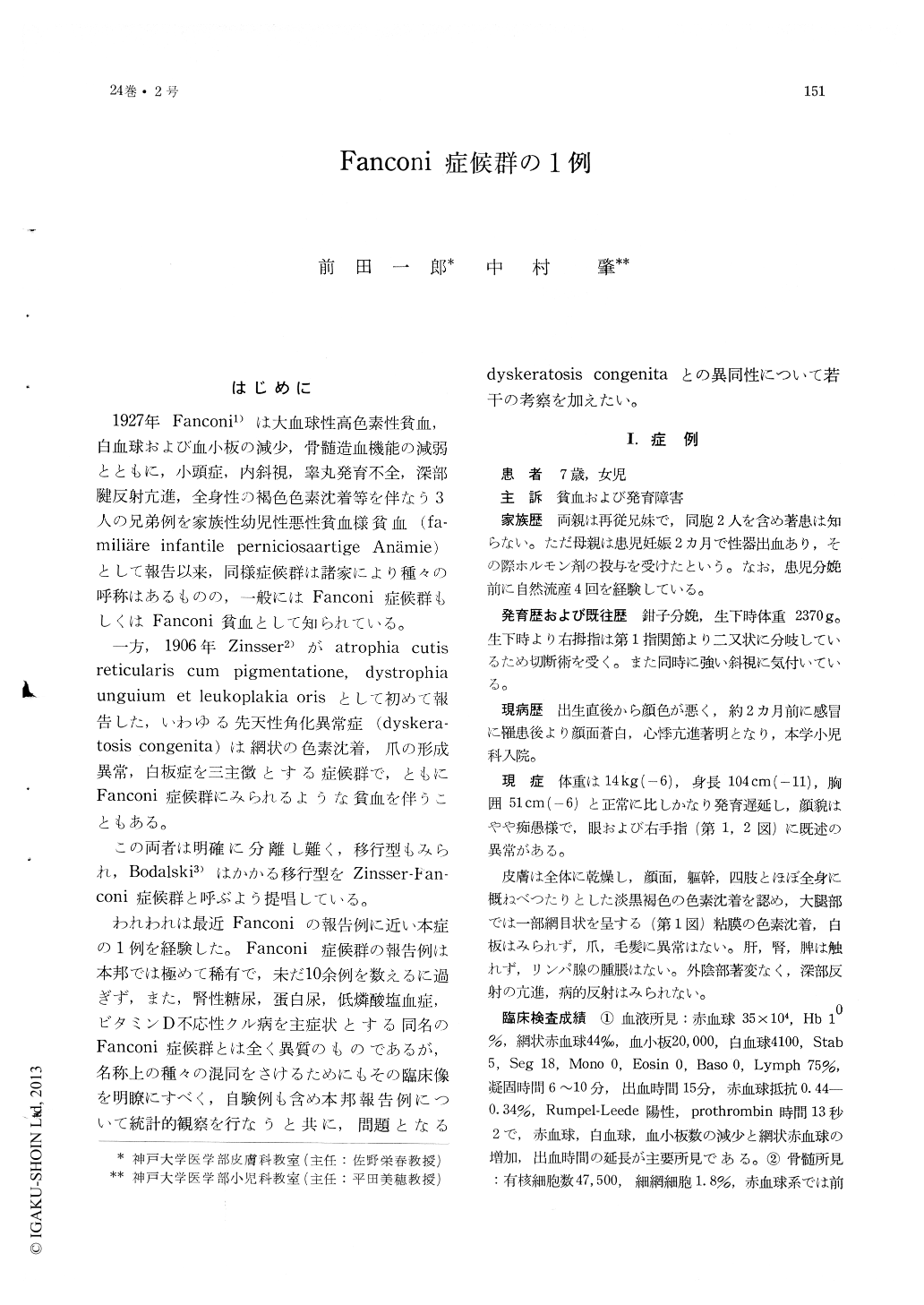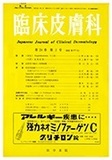Japanese
English
- 有料閲覧
- Abstract 文献概要
- 1ページ目 Look Inside
はじめに
1927年Fanconi1)は大血球性高色素性貧血,白血球および血小板の減少,骨髄造血機能の減弱とともに,小頭症,内斜視,睾丸発育不全,深部腱反射亢進,全身性の褐色色素沈着等を伴なう3人の兄弟例を家族性幼児性悪性貧血様貧血(fa-miliäre infantile perniciosaartige Anämie)として報告以来,同様症候群は諸家により種々の呼称はあるものの,一般にはFanconi症候群もしくはFanconi貧血として知られている。
一方,1906年Zinsser2)がatrophia cutisreticularis cum pigmentatione, dystrophiaunguium et leukoplakia orisとして初めて報告した,いわゆる先天性角化異常症(dyskera—tosis congenita)は網状の色素沈着,爪の形成異常,白板症を三主徴とする症候群で,ともにFanconi症候群にみられるような貧血を伴うこともある。
A 7-year-old girl of this disease was reported. She has had anemia since birth and marked retardation of growth. Her parents were second cousins, but no abnormality was found in her siblings. The right thumb bifurcated at the first phalangeal joint, strabismus and diffuse faint dark-brown pigmentation over almost the entire body were proved.
Decreased number of red cells, white cells and platelets, and prolongation of bleeding time were proved. The number of nucleated cells in the bone marrow was decreased.
Statistical studies on 14 reported cases in Japan were performed. Male was more affected, and average age of the cases was 4 years and 4 months. Malformations and congenital defects found in the patients were almost the same as the reports from abroad-growth retardation, pigmentation of the skin, malformation of extremities, especially that of thumb, strabismus, retarded development of reproductive organ, contraction, microcephalus, hernia etc. Because this syndrome has many common features with dyskeratosis congcnita, there have been various opi-nions as to whether the two diseases were of the different entities or not. Bodalski proposed that the transitional form of the two diseases should be called as Zinsser-Fanconi's syndrome.

Copyright © 1970, Igaku-Shoin Ltd. All rights reserved.


